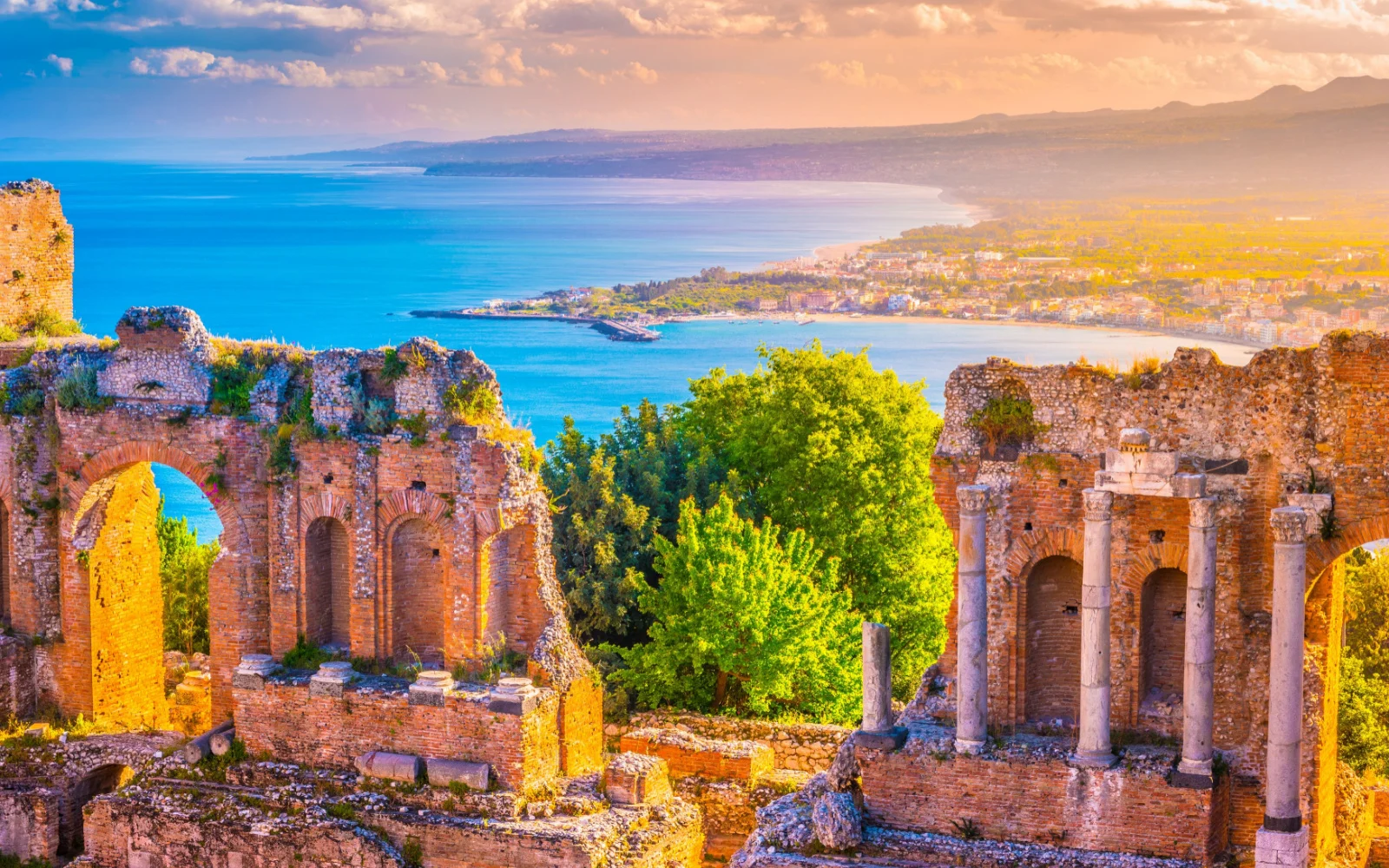Sicily touches the Mediterranean, Ionian, and Tyrrhenian seas, forming gorgeous beaches that rival those of the Greek islands. Three rugged mountain ranges cross the scenic island, which is dotted with ruins from Ancient Greek and Roman times.
Interior villages and cities boast amazing examples of Baroque architecture, hilltop castles, and labyrinthian streets where bakeries, traditional restaurants, and markets form the beating hearts of its historic towns.
16 of the Best Places to Visit in Sicily
If you’re planning on heading to Sicily on your Italian adventure, make sure to leave room to check out some of the 16 best places to visit in Italy. Let’s take a look at the most incredible destinations and towns this island has to offer!
1. Agrigento
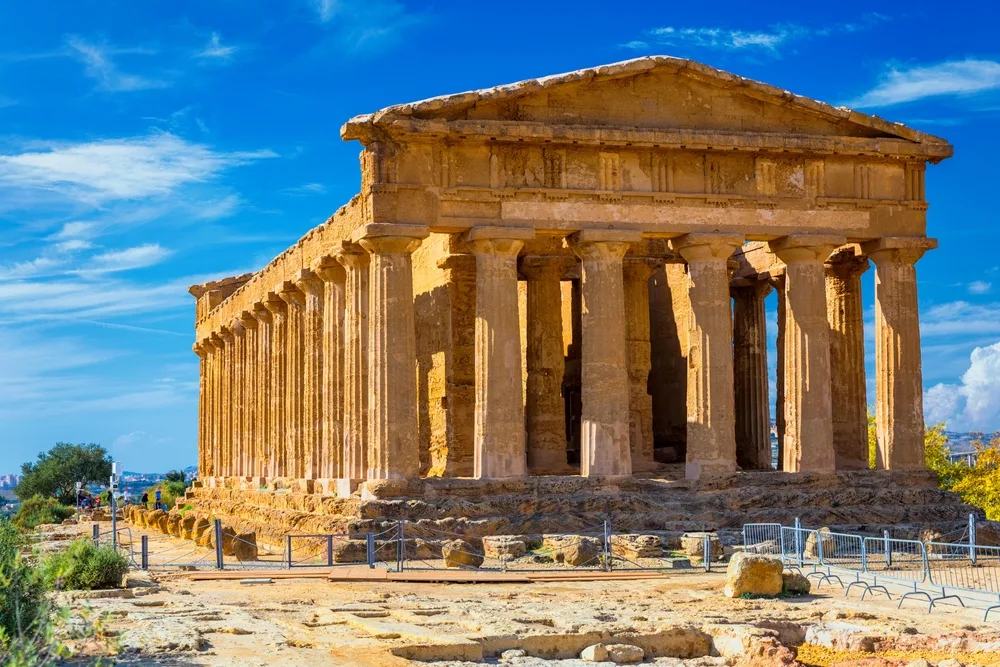
DaLiu/Shutterstock
Home to the remarkably-preserved Greek ruins in the Valley of the Temples, hilltop Agrigento sits on the island’s southwestern Mediterranean shore and is one of the highlights of visiting Sicily.
You’ll feel like you’ve wandered into Ancient Greece as you walk through consecutive colonnaded temples (like the Temple of Juno and Temple of Heracles) and structures overlooking the sea, a truly spectacular sight. The Valley of the Temples is located in what was once Akragas.
The temples are well-preserved and holds UNESCO World Heritage Site status. Pay a visit to the Museo Archeologico Regionale Pietro Griffo to see artifacts and learn about the fascinating history of the ancient city and its still-standing structures.
Also worth seeing in Agrigento is the The Kolymbetra Garden, an enchanting grove of orange and olive trees that have been growing for centuries with subterranean chambers built by the Greeks in ancient times.
You’ll fill up on classic Sicilian fare with seafood and pasta dishes at restaurants like Il Terrazzo Dei Templi and Il Re di Girgenti (both boasting an incredible view of the Valley of Temples).
Unspoiled beaches, like Punta Bianca Beach, and Sicilian wineries make an awesome day trip if you want to explore more of the area, just 15 minutes to an hour away.
2. Cefalu
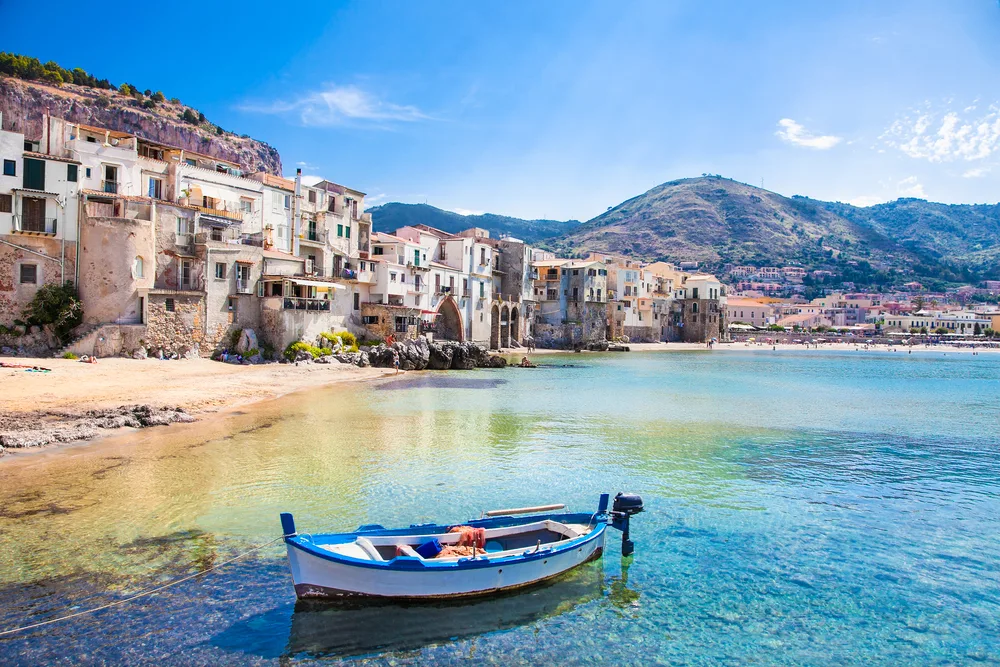
Aleksandar Todorovic/Shutterstock
The small, coastal town of Cefalu in Sicily’s north is a stronghold of Baroque and medieval architecture, featuring impressive cathedrals filled with priceless relics and historic city squares that seem to transport you in time.
Nearby beaches, museums, and seafood-laden cuisine make it really special to visit. In Cefalu’s historic quarter, the 12th-century Norman Cathedral, or Duomo, is breathtaking in its size, fortification, and detail as it stands with twin towers.
Historic squares, like Piazza Duomo (home to Palazzo Maria) and Corso Ruggero (the main shopping street today), feature structures from the 13th century and stunning examples of medieval architecture.
A rock-hewn medieval washhouse accessed by stone steps leads you down into old basins where lion heads with cast iron mouths spew forth the waters of the Cefalino River.
Baroque architecture around the small town, like the 18th-century Chiesa del Purgatorio church with its underground crypt holding desiccated bodies and countless facades bearing ornate designs, sometimes on otherwise medieval structures.
The stone-built Temple of Diana is at the heart of the town, standing on a high rock that gives it sense of importance and reverence above the town. An ancient 9th-century cistern can be seen nearby.
Visit the Museo Mandralisca, filled with artwork like the Renaissance Portrait of an Unknown Man by Antonello da Messina as well as family relics like crockery, taxidermy, furniture, and coins, all housed in an old family palace.
3. Isola Bella
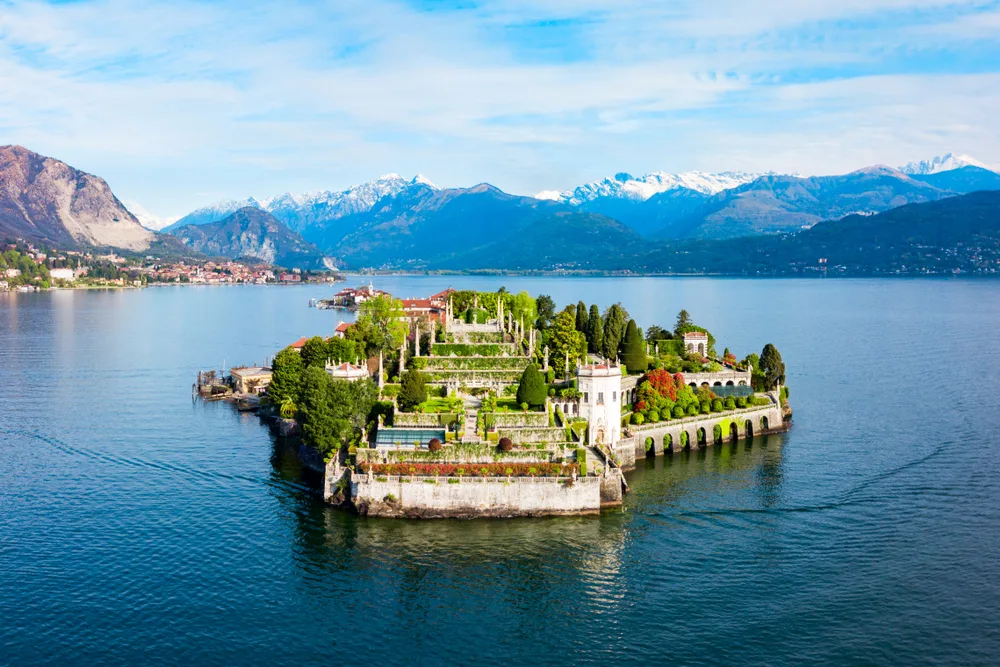
Saiko3p/Shutterstock
Isola Bella translates to “beautiful island.” The description is broad, but accurate. Situated on the Ionian Sea between Capo Taormina and Capo Sant’Andrea, it boasts stunning views with clear waters lapping pebbled beaches and sloped streets that traverse its rocky, sun-soaked terrain.
Once privately owned and now a nature reserve and part of a larger archaeological park, the island’s focal point (if you can tear your eyes away from the coastline and beaches) is Villa Caronia standing on the central hilltop with panoramic views of the sea and larger Sicily.
The villa is surrounded by splendid botanic gardens, bringing exotic flowers, plants, terraces, and stone steps and walls into the landscape. Something interesting about Isola Bella is that it’s technically a peninsula connected to Taormina, but only by a narrow strip of land that disappears at high tide.
As low tide, you can cross this strip along a scenic path to reach the mainland and find more places (including ruins and beaches) to explore. Isola Bella’s own pebbled beach is blessed with calm, sheltered waters that remain warm a little longer than its unprotected neighbors.
Getting here can be a fun adventure with the option to stroll the stepped, sunken path at low tide or take a cable car for amazing views on the way. Boat tours can be a great option if you just want to see the villa and rocky island from a distance.
4. Mount Etna
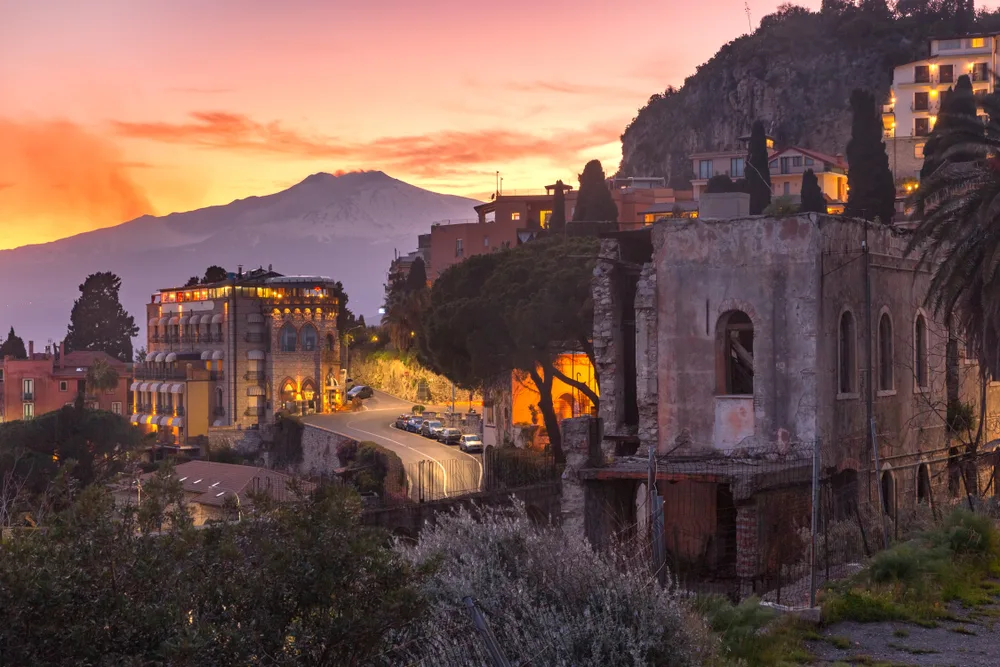
Kavalenkava/Shutterstock
Mount Etna is Sicily’s highest mountain and an active volcano that dominates the east coast’s landscape with its huge, imposing presence. It holds the title of the largest European active volcano and stands over 3,200 feet above sea level.
Yawning canyons, gorges, and ice caves, like the Grotta del Gelo, along with ash and lava fields, deep craters, and sunken valleys make the landscape around Mount Etna feel dangerous yet beautiful. It’s a great place to hike and take in the unique, alien landscapes.
Etna Park preserves the natural state of the volcanic mountain and its surrounding gorges, 200+ caves, valleys, and canyons with rugged trails that lead you up to summit craters, deep into the Bove Valley, and along the cabled Alcantara Gorges.
People come to hike, bike, and even ski around Etna (Nicolosi and Piani di Provenzana ski resorts). The High Mountain Trail of Etna Park takes 3 days to complete and rewards you with panoramic views over the region and close-up looks at the Central, Northeast, and Southeast craters on the summit.
For another kind of thrill, you can hike down into the Bove Valley on its eastern side to see a lava tunnel and hot crater. Around the mountain, orange groves, vineyards, forests, and coastal plains contrast sharply with its blunted, crater-topped mass.
5. Noto
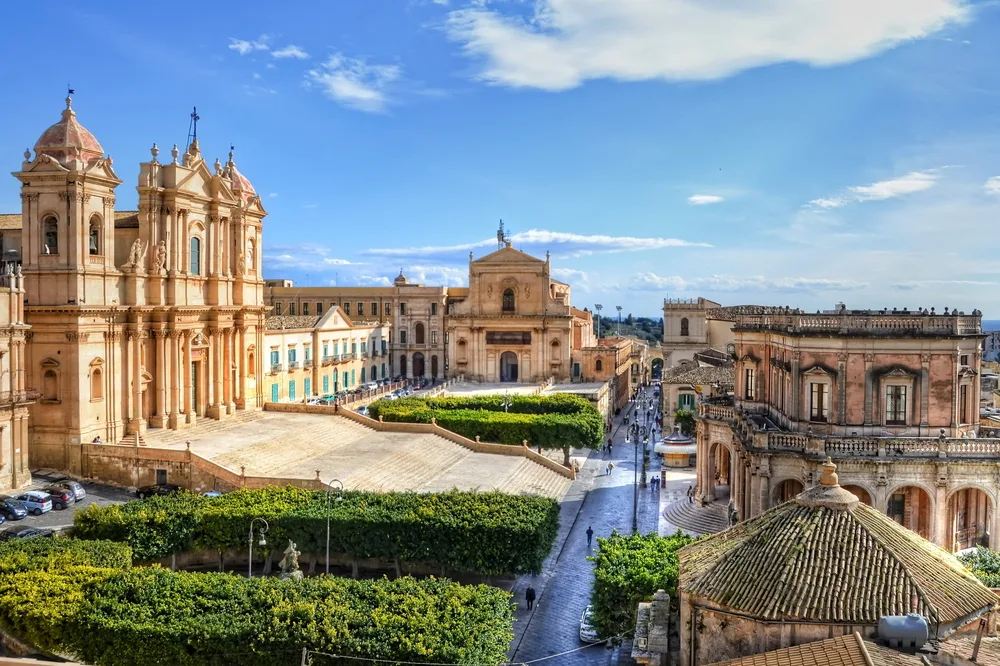
Dalibor Kastratovic/Shutterstock
Noto is a Baroque town in Sicily’s southeastern region that’s reminiscent of Havana, Cuba. Unexpected architectural details, old cars, and ornate palaces and arches lend it an air of importance and hint at former days of luxury and wealth.
This is a city for sightseeing, and you’ll find no shortage of incredible structures to admire on a stroll through this UNESCO-recognized town. Look for the Noto Cathedral, built in the 15th century, then destroyed by an earthquake and reconstructed in the 18th century.
Cross the street to view the richly-detailed Palazzo Ducezio, lined with columns and arches in the style of French palaces. It houses the gilded Sala degli Specchi, or Hall of Mirrors, and old frescoes. Today’s it’s the Town Hall.
Wander over to the Palazzo Nicolaci, where ornate wrought-iron balconies curve and protrude from the palace with figures carved into them, like sphinxes, winged horses, sirens, and angels.
It’s worth stopping to look at the beautiful Arch of Ferdinand II at the entrance of Porta Reale on Via Vittorio Emanuele’s tree-lined square. A tower, pelican, and dog statue on the top are important symbols of strength, sacrifice, and loyalty.
6. Messina
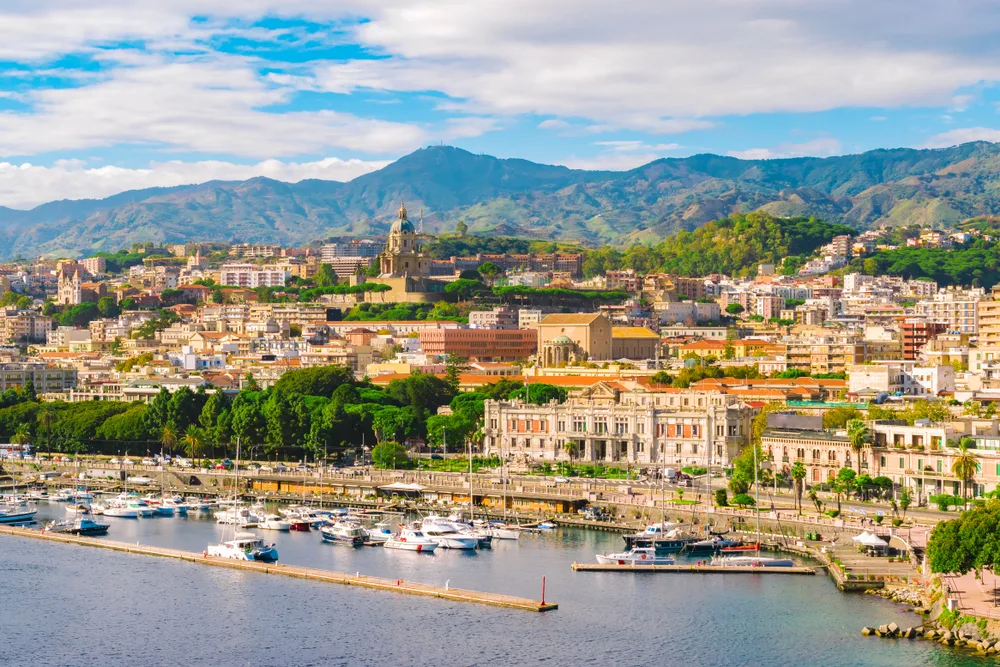
Napa/Shutterstock
Messina is a harbor city and beach destination on Sicily’s northeastern coast with amazing views of the Strait of Messina, stunning architecture and fountains, and delectable food and pastries at its local bakeries and waterfront restaurants.
Messina’s most famous sight is the Messina Cathedral, or Duomo di Messina, and its astronomical clock tower that performs a daily “show” at noon. Its golden figures rotate and move in an enactment of the story of Jesus’ birth and the building of the church.
The church itself is 800 years old and built in Sicilian Norman style with Gothic elements, featuring carved stone detail and painted rafters in its cavernous interior. You’ll find decorative marble fountains around it with statues of Neptune and carvings.
Other churches nearby, like the 12th-century Chiesa Santissima Annunziata dei Catalani, the Gothic Chiesa di Santa Maria Alemanna, and the stone Sant’Antonio da Padova built after the devastating earthquake of 1908, are interesting to visit.
Browse the shops along Viale Martino, Via Garibaldi, and Piazza Cairoli to get a taste of this town’s handcrafted goods and foods, then head out to the coast to see incredible views over the Strait and the shores of mainland Italy.
Messina’s beautiful beaches look out over the blue Strait of Messina to mountains and boast broad, sandy shores studded with umbrellas and chairs. La Spiaggetta is one of the best! Grab a glass of Sicilian wine or Birra Messina (regional beer) while you’re here.
Take day trips out to nearby Taormina for ruins and more beaches, or to Vulcano in a volcanic archipelago that’s easily reached by ferry from Messina.
7. Ragusa
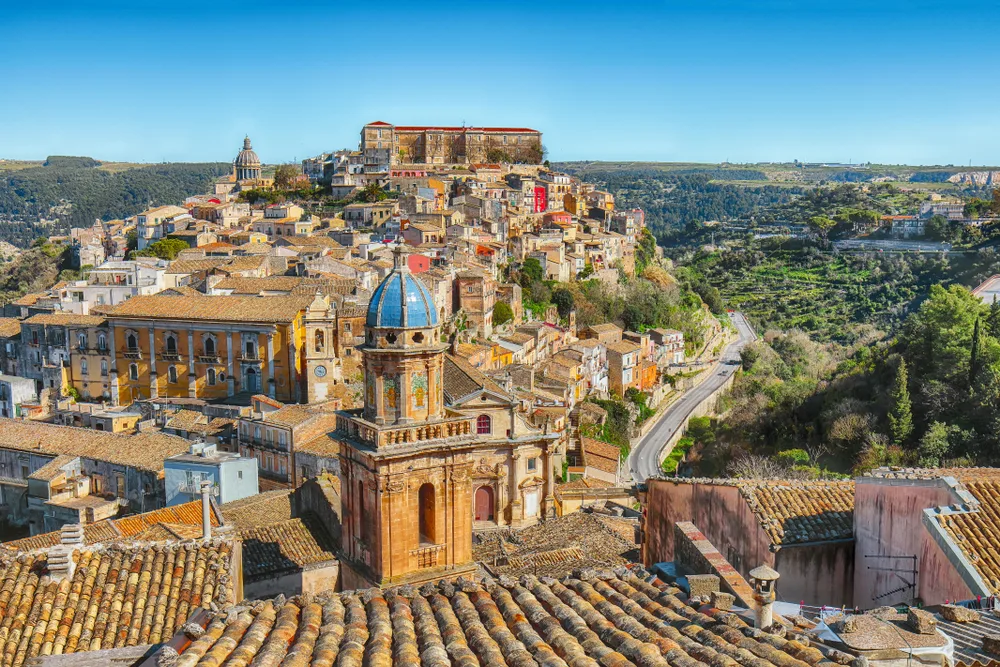
Vadym Lavra/Shutterstock
Sun-drenched Ragusa sits high on a hill near the coast in southeastern Sicily with an absolutely beautiful old town, winding streets with close-packed homes topped with golden and antique terracotta tiled roofs, and ornately detailed churches that rise from their surroundings.
This is a charming and scenic part of Sicily to visit if you want to explore an authentic town that’s not built around tourism. Sunny and bright with colorful homes and domes capping cathedral bell towers, it’s somewhat like entering an Italian fairytale.
The old town, or Ragusa Ibla, is where you’ll find fantastic examples of Baroque architecture in its castle-esque Duomo di San Giorgio with renowned stained-glass windows and fine scroll, dome, and spire detail.
Public parks and green spaces offer amazing views over the region from their hilltop location, while the modern section of Ragusa Superiore boasts interesting art and history museums with inspiring cathedral architecture.
Visit the Giardino Ibleo park to enjoy a picnic, stroll the walking paths, and take in panoramic views all around you. Be sure to taste Focaccia Ragusana topped with tomato and local Ragusano cheese.
For an interesting day trip that ends in tasty sips, visit nearby wineries in Chiaramonte Gulfi and Vittoria, just 20-40 minutes away.
8. Taormina
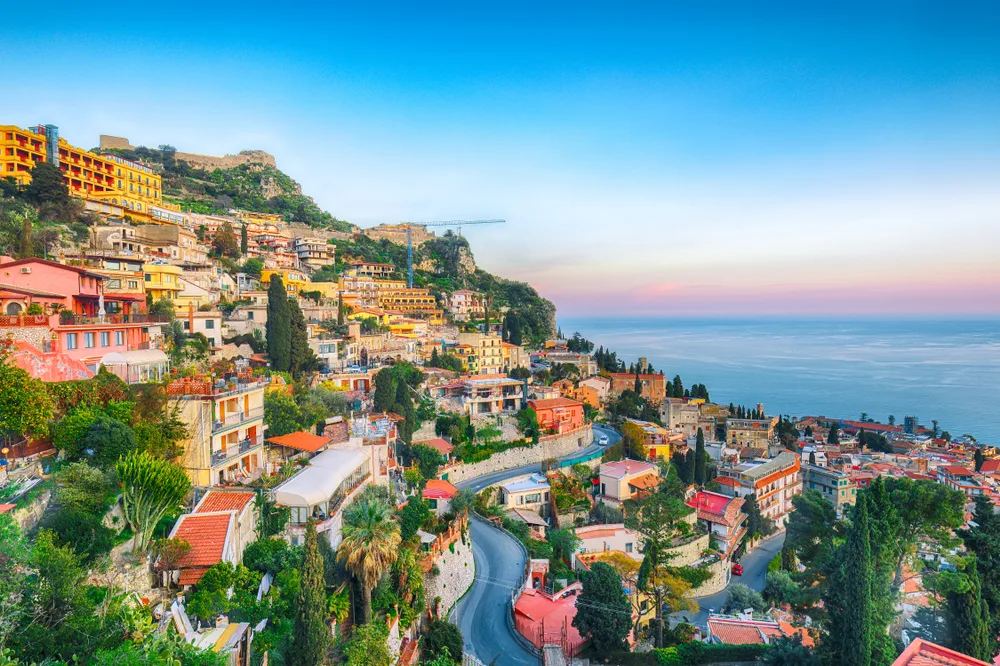
Vadym Lavra/Shutterstock
Isola Bella (from an earlier entry) is technically part of Taormina, a small and hilly coastal town on the Ionian Sea with picturesque views over the sea and the nearby Mount Etna volcano.
Taormina is famous for its Greek theatre ruins and its beaches, which are sandy and tinged with a deep brown color due to their igneous rock makeup from the hulking volcano’s presence. Bring back a sample of this unique sand to remember your trip!
Teatro Antico di Taormina, or the Greek amphitheatre ruins in the town, are truly stellar to see in person with their well-preserved steps, remaining columns, and walls. Views from here encompass the volcano and sea, making it an excellent spot to start your trip.
Beaches are located just below the theatre, providing ample space for lounging or swimming in the sunshine. At low tide, the thin strip connecting to Isola Bella, a small, rocky island with a central palatial villa, becomes accessible.
Trails that begin in Taormina lead all the way to the cone of Mount Etna if you’re up for a challenging hike. Some of the best views outside of the Greek theatre are found in Villa Comunale di Taormina park.
Visit Chiesa Madonna della Rocca, an old sanctuary carved into the rock that you reach from steep stone stairs, to see another perspective of the ocean and Taormina from above.
9. Madonie Mountains
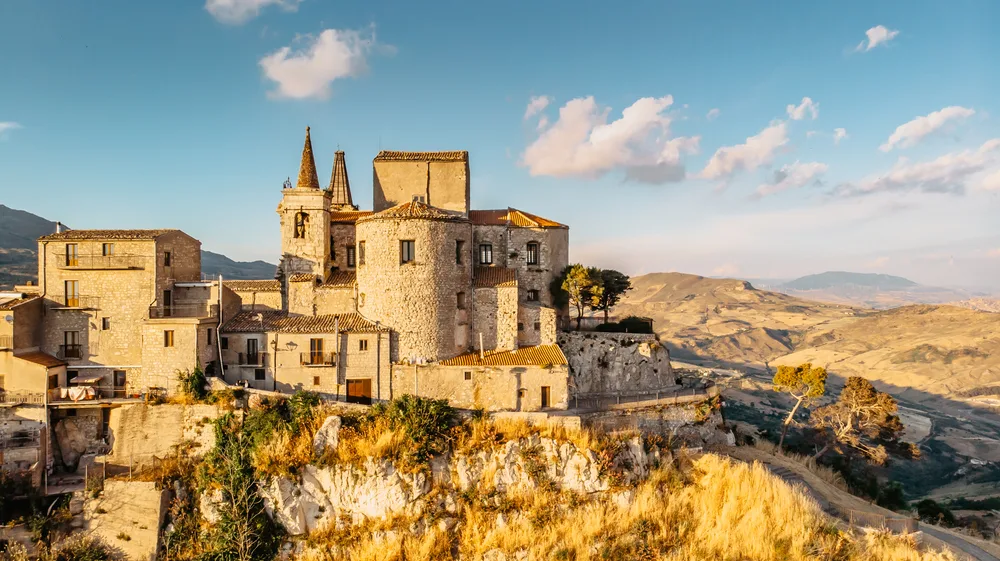
Eva Pruchova/Shutterstock
The Madonie Mountains span nearly 40,000 acres between Palermo and Cefalu, encompassing a massive national park and landscapes from coastline to the second-highest peak in Sicily, Carbonara Massif.
Madonie Natural Park, or Parco delle Madonie, is a wilderness park that features some excellent hiking trails, medieval villages to explore, and Sicily’s best examples of biodiversity thanks to the unique elevation and coastal location.
You’ll hike past wild orchids, rare trees and plants, and abundant wildlife that thrives in this mountainous setting on Madonie Park’s rugged and scenic trails.
From giant hollies in Piano Pomo to the regional and endangered Madonie fir tree, there are many natural sights you can only see here. Bike tours, coastal boat tours, and guided hiking tours are other ways to experience the region’s beauty.
Medieval villages with tiny populations, like Pollina, Isnello, and Collesano, are where you can see traditional homes and meet friendly locals still inhabiting stone homes and worshipping in old churches.
10. Erice
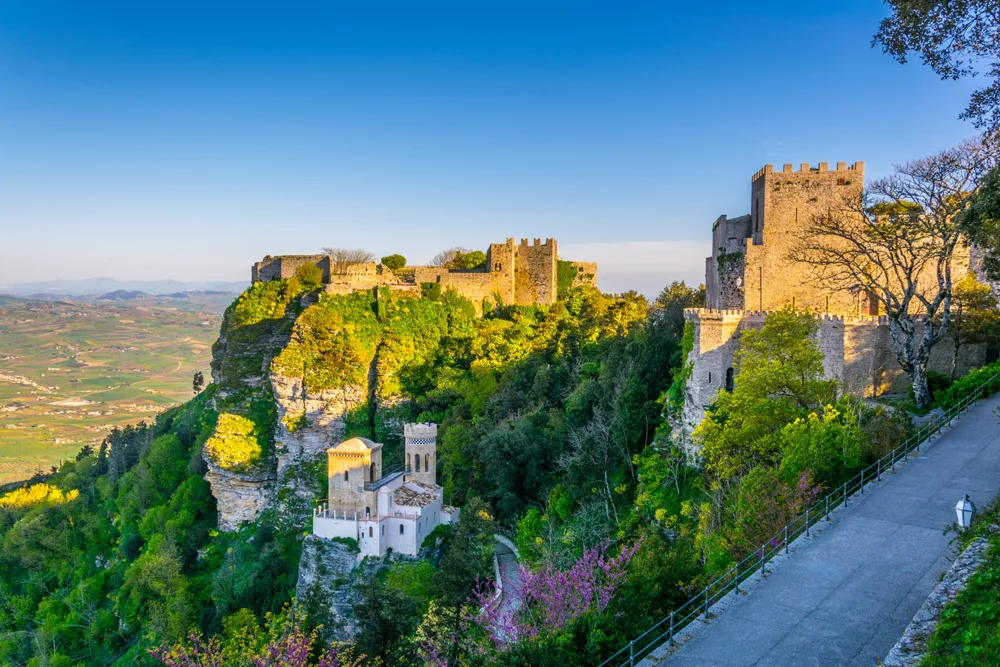
Trabantos/Shutterstock
Erice is an isolated town high up in the mountains of western Sicily, looking down over the vineyards of Trapani, Marsala, and dramatic capes and Egadi islands to the northeast and northwest.
It’s an idyllic, 700 year-old town with its medieval castles and fortresses nestled among high forests and rugged peaks — photos can never do it justice. Mythic legend says the town was founded by Eryx, a giant that was killed by Heracles, giving it a unique and storied flair.
The highest fortress, the Venus Ericina castle, is built in the Norman style in the place of where the ancient temple of Venus once stood. The English-style Balio Gardens around the castle are free to tour and stroll, making the area even more scenic.
Views from this perched point on Mount Erice are truly spectacular with turrets and watchtowers standing proudly in the surrounding green and rocky mountain setting.
You’ll be able to see the Tower Pepoli, commissioned by a former Count, which now acts as a lighthouse and observatory. The Spanish Quarter fortress dates back to the 17th century and has been restored to its former glory, housing the Museum of Arts and Crafts of Erice.
The center of the medieval village of Erice holds the Neogothic Cathedral of the Assumption, dating back to the 14th century with roots as a military fortress. The old watchtower was converted to a bell tower. Cyclopean walls (said to be built by Cyclops) surround the city and feature 3 gates for access.
While you’re here, you have to try local specialties like busiate with Trapanese pesto, Genovesi pastries with custard, and almond pastries from Pasticceria Maria Grammatico in town.
11. Monreale
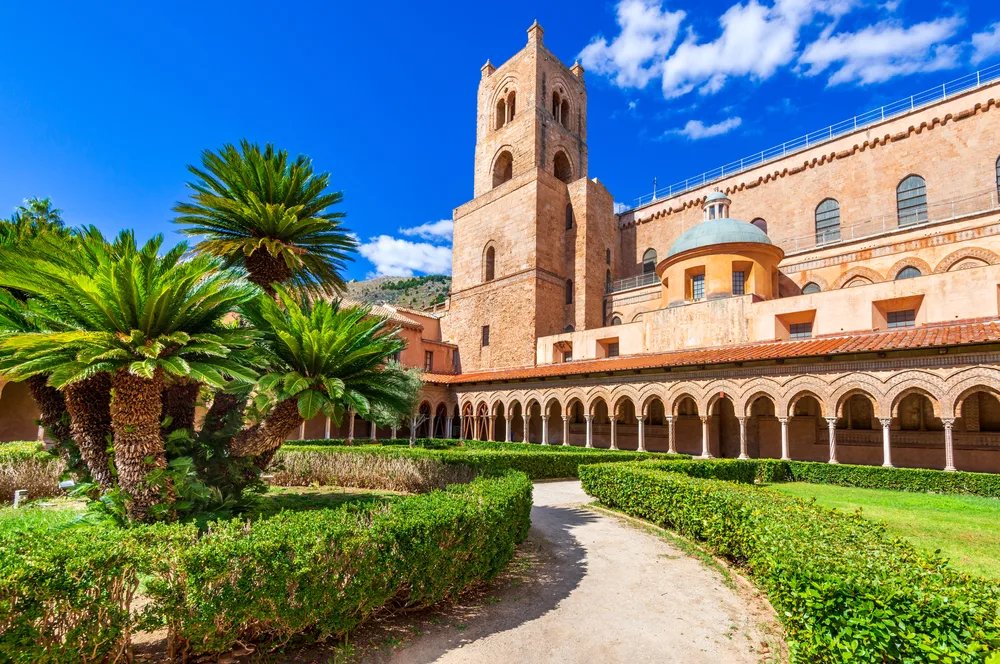
ecstk22/Shutterstock
The beautiful town of Monreale is near Palermo with amazing views over verdant valleys, olive and citrus groves, and mountains, but isn’t your typical Sicilian town. The Arabic influence is strong here, apparent in the architecture and garden designs.
Monreale sits on Monte Caputo, famed for its groves of almonds, olives, and oranges that are easily seen from high points around the city as you look down over the La Conca d’Oro valley.
Arches, winding walkways, palm trees, domes, and Norman-Arab style architecture dominate the city and give it a different feel than its nearby towns.
The 12th-century Cathedral of Monreale, or Duomo Monreale, is one of the highlights of the town. Its massive bronze doors, silver altar, marble floors with mosaics, the Diocesan Museum, and high terraces that offer stunning views are all great reasons to check it out.
The Benedictine cloister is one of the most incredible parts, featuring Old and New Testament scenes on the columns with gilded mosaics and detailed carvings of Biblical figures.
After your cathedral and museum tour, you can visit the Biblioteca “Ludovico II De Torres” library through its heavy, decorated door and see ancient murals still visible on the interior walls.
12. Catania
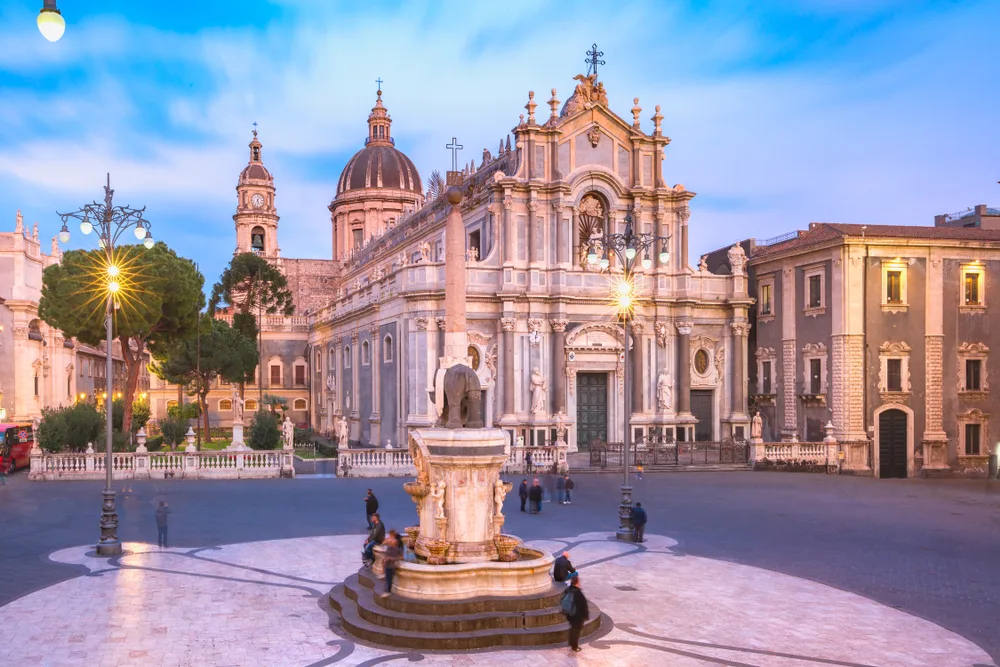
Kavalenkava/Shutterstock
Catania has roots as an old port city, resting in the shadow of the monumental Mount Etna volcano. It’s known for its bustling public squares, or piazzas, historic monuments, and Roman ruins that you can tour to step back in time.
Catania is always a favorite spot for travelers in Sicily owing to its diversity of things to do. Set out for Mount Etna on hiking trails that lead all the way up to the summit cone, spend a day or two sightseeing, browse local markets, and dine on delicious Sicilian fare at local restaurants.
At the heart of the city, Piazza del Duomo focuses around the Catania Cathedral with its own bustling fish market, a ring of Sicilian seafood restaurants, and the black basalt Fontana dell’Elegante monument depicting an elephant.
Follow Via Etnea to the public square of Piazza Stesicoro, where you’ll marvel at old Baroque palaces and the central Vincenzo Bellini composer monument standing proudly at its heart.
The Roman amphitheater ruins right on the square are a delight to witness and feature tunnels and underground baths. Between here and Via Umberto, you’ll find tons of restaurants and pubs (not bars, which refers to coffee shops in Italy) to check out.
Villa Bellini, also honoring the opera composer who’s statue is on Piazza Stesicoro, features several busts and statues of important figures from the area with a beautiful garden setting near the center of town.
Coffee shops are a big deal here, and you’ll want to stop for coffee and a dessert pasticcini (a type of small pastry) at one of the pasticceries in town. For savory bites, local arancini (stuffed rice balls shaped like Mount Etna) is a must-try.
Local specialties like these can be found at popular restaurants like Carne de Cavallo and Al Tortellino, plus pasticceries like Pasticcini da Bar Savia and Caffe Lizio e Bar Diaz.
13. Syracuse
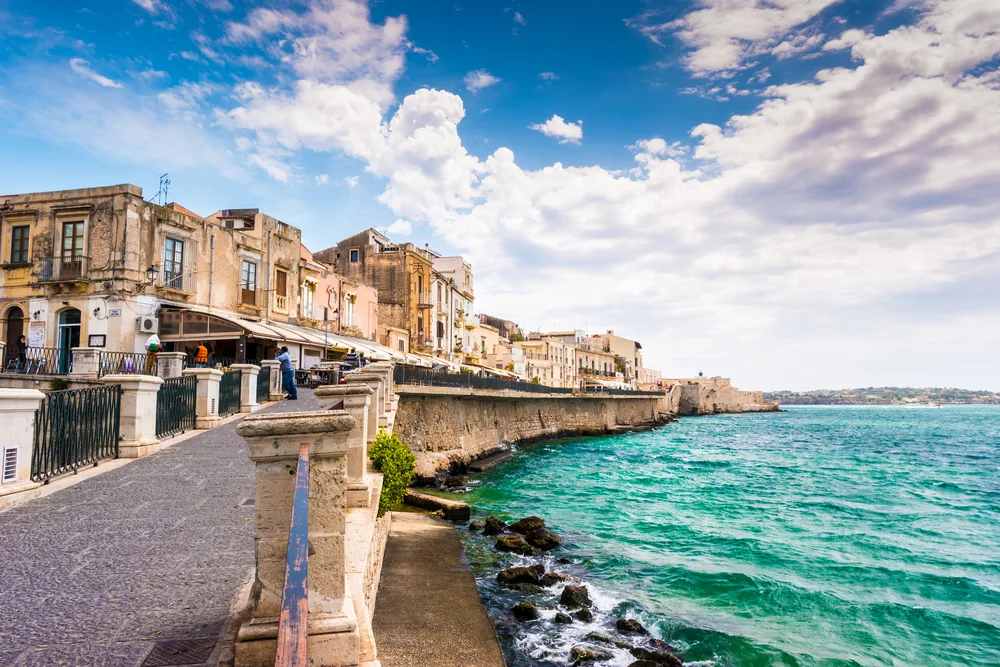
Romas_Photo/Shutterstock
Syracuse, Sicily is best known for the Ancient Greek and Roman ruins within the heart of the city, but it’s also a place with amazing natural beauty. Located on the Ionian Sea, this coastal town packs a lot of history and exploration possibilities in.
Learn about the significance of the ruins you’ll see in Syracuse at the Museo Archeologico Regionale Paolo Orsi, where artifacts and relics along with informational exhibits detail the Greek and Roman past of the city.
The Syracuse Cathedral in the Piazza Duomo, the heart of town, was once a Greek temple and features a stunning facade in the High Sicilian Baroque style. It’s ornately detailed with carvings and columns.
At the center of the city, you’ll discover the natural Arethusa Spring the Archaeological Park Neapolis with several ruins to explore: An early Imperial Roman Amphitheater, Teatro Greco dating back to 5th century BC, and a path leading from the Latomie di Santa Venera to the Necropolis.
See an ancient quarry, Latomie del Paradiso, within the archaeological park, along with Grotta dei Cordari and the ear-shaped Orecchio de Dionisio cave on Temenites Hill. The latter translates to the Ear of Dionysius for its shape and echoes heard within it.
A fountain honoring Diana, the Roman goddess of hunting and wild animals, stands at the center of Piazza Archimede along with the Tempio di Apollo (Apollo’s Temple).
Interesting museums like Balloma Palace Regional Gallery feature artwork, carved Biblical scenes in marble, and terracotta relics from the region. Follow the footbridge at the beach over to Ortigia Island to open up your exploration, and don’t forget to
14. San Vito Lo Capo
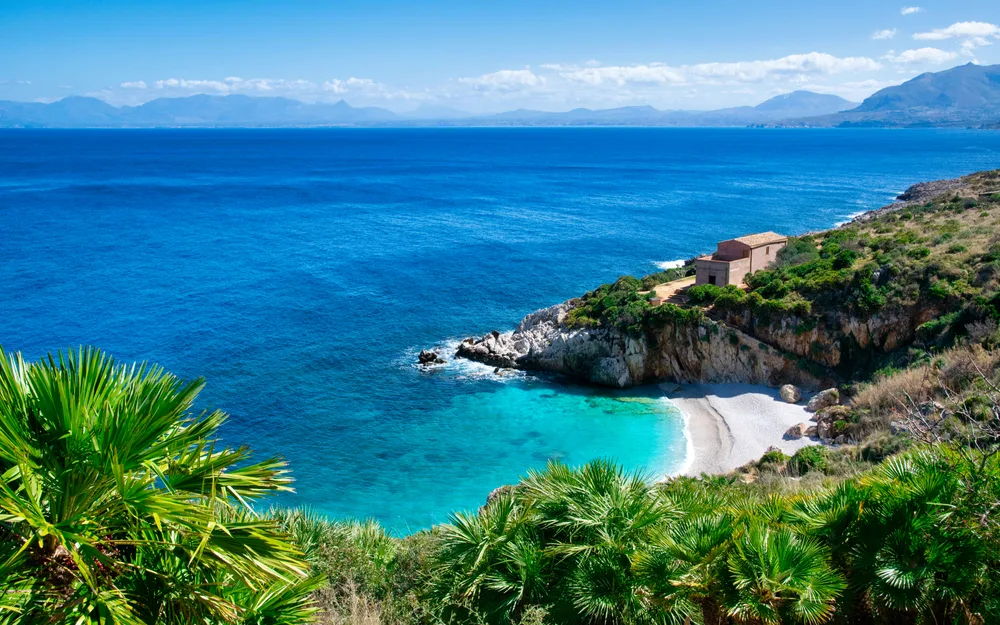
Kate_gps/Shutterstock
San Vito Lo Capo is a beach destination on the northwestern coast of Sicily near Palermo, home to some of the island’s most picturesque beaches, a bustling public square with an old sanctuary, and a taste of the laid-back good life that traditional Sicilians enjoy.
If you’re craving some sunshine, transparent waters to swim in on warm days, and wide swathes of sandy beach to lounge on, you’ve come to the right place. Most people come to San Vito Lo Capo for lazy beach days and it’s the perfect spot for it!
San Vito Beach rests in the shadow of Monte Monaco, but don’t worry — there’s plenty of sun! Crystal clear waters, 1.8 miles of golden sand, and serene mountain views make it one of the very best around.
The Faro lighthouse in the bay is a beautiful coastal sight, and if you climb up to the top, you’ll be rewarded with soaring views over the water and town. Piazza Santuario houses the Santuario de San Vito, dating back to the late 1500s. A marble altar inside along with a marble statue of San Vito wait for you inside.
A fortress surrounds the sanctuary with the historic purpose of protection during pirate raids, while a small museum within the sanctuary tells the story of the namesake saint and martyr.
Good food, espresso, and wine are a big deal in San Vito, so be sure to dine like the locals and try the Arab-influenced couscous prepared the local way: Steamed in a clay pot with fish broth.
Another clay pot food to try is Caldo Freddo, or “cold heat.” It features a rum-soaked sponge cake in a clay bowl, topped with gelato and cream, drizzled with dark chocolate for a mix of cold and hot ingredients. Have an espresso to “kill the sugar,” as locals say.
15. Marsala
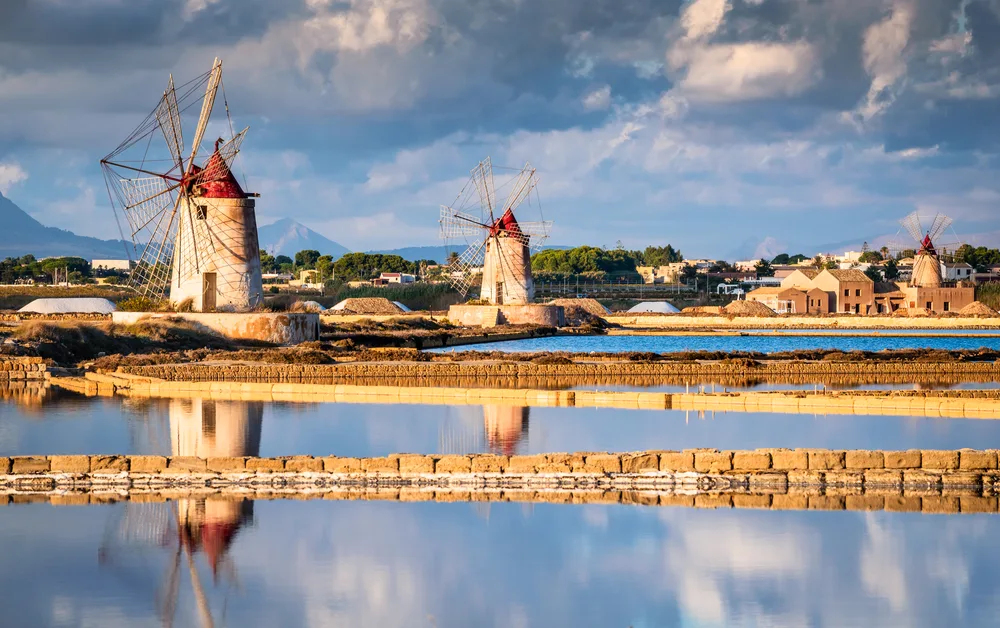
ecstk22/Shutterstock
Things are delightfully different in Marsala, located on Sicily’s western coast. It’s the birthplace of world-famous Marsala wine with naturally beautiful coves and beaches, world-class archaeological museums, and palaces that make sightseeing a treat.
One of the gates to the city, Porta Garibaldi, or the “sea gate,” has been standing since the late 1600s and features a crowned eagle, missing ancient statues on either side, and an atrium topped with a lamppost.
Ruins at Lilybaeum and Mozia are fascinating to explore, with traces of ancient cities on Marsala’s edge revealing carved stone slabs and former homes just outside of town. Mozia’s ruins are accessible by ferry on a neighboring, tiny island.
Visit the Baglio Anselmi Archaeological Museum to view relics and artifacts from the town’s past, including an old shipwreck dating back to the Punic War and an impressive collection of crockery and pottery.
Other museums, like the Flemish Tapestry Museum and Grignani Palace, are great spots to see textiles and artwork focusing on the Marsala town and region.
The Salina Genna, or salt pan, was created in the 15th century and every generation since has taken on the responsibility of caretaking and maintaining the pans. Take a guided tour to learn about how salt is produced and harvested here — it’s really interesting and different!
Head out of town to visit the Lo Stagnone Natural Reserve, where the Lo Stagnone Lagoon sits as a popular spot for kitesurfing and swimming. In town, Mamma Caura is a great seafood and pasta restaurant to try (especially at sunset), overlooking the salt flats and canal with an outdoor dining terrace.
16. Trapani
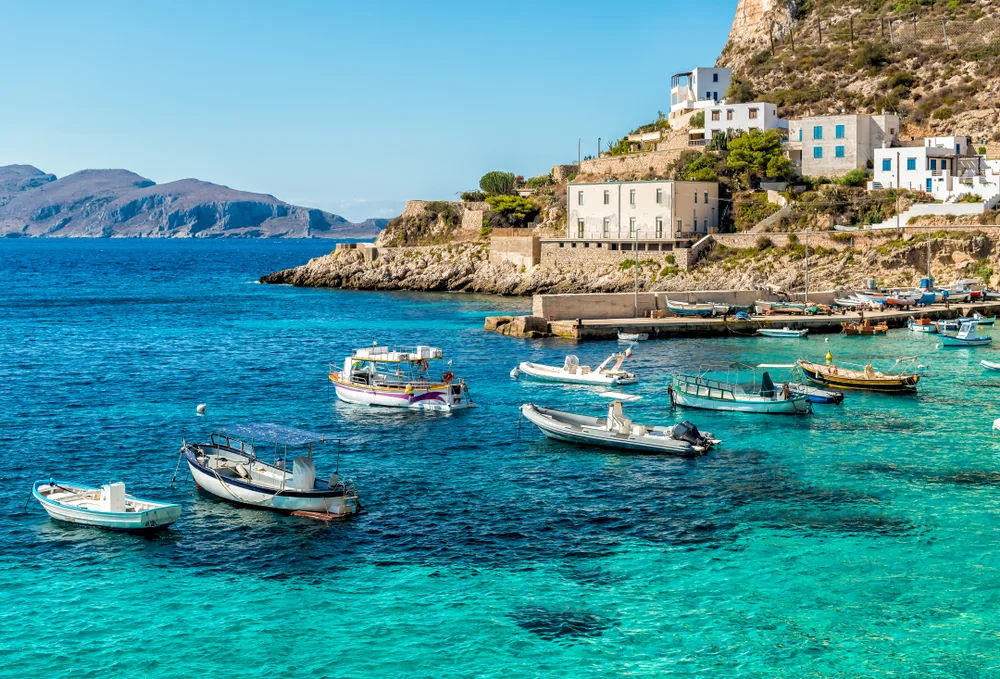
Elesi/Shutterstock
Trapani is famed for its vineyards, salt flats, and fishing ports, all made more special by its Arab-influenced cuisine, architecture, and customs. It retains its Old World feel and famously produces wines like Marsala, Erice, Menfi, and Moscato.
The crescent beach of Trapani is scenic and such a relaxing spot to lounge on the sand, swim in the clear waters, and look out to the neighboring Aegadian Islands from the Torre di Ligny watchtower perched on the bay.
The Ligny Tower, as it’s called by locals, remains in good condition and operates today as a museum with artifacts and relics dating back to Trapani’s earliest days.
This is a town of production and pride in the goods it creates, from salt to fresh fish and wine. Tuna fisheries still operate off the coast and return to its old ports, while long-standing salt flats are carefully tended and harvested here.
You’ll find captivating churches filled with religious relics from the area, like the 18th-century Baroque Chiesa del Purgatorio church. Inside, wooden sculptures are reverently kept and brought out each year for La Settimana Santa parades (Easter’s Holy Week).
While Trapani’s beaches, like San Giuliano Beach, are excellent with fine, soft sand, many people enjoy taking the ferry out to the Aegadian Islands for picturesque coves and a secluded, exclusive atmosphere.
Things to Consider
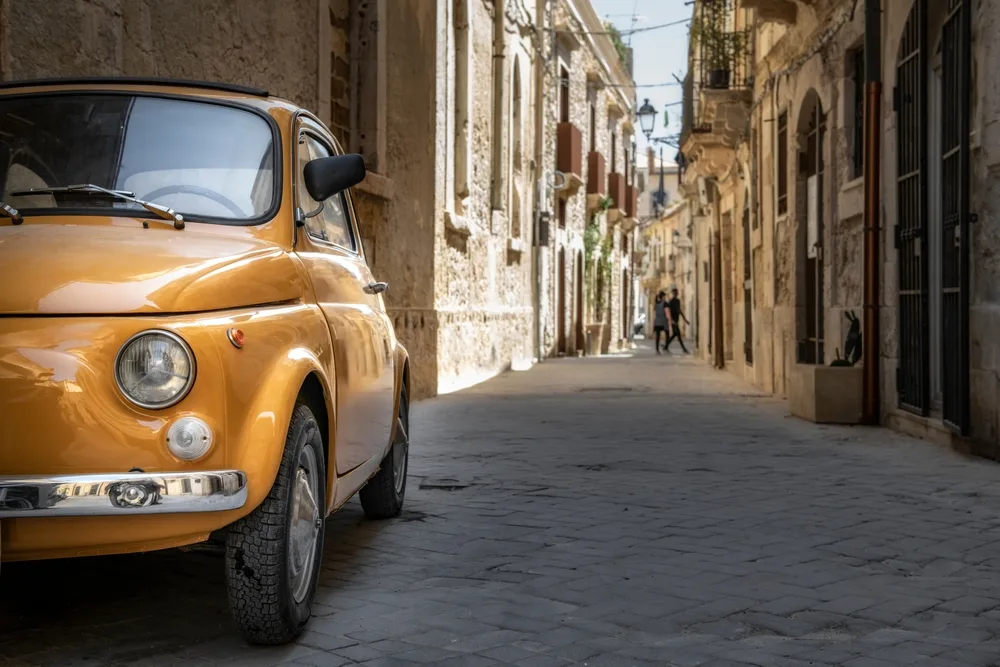
Ron Van De Stappen/Shutterstock
Planning the perfect visit to Sicily means knowing the best places to visit, but also having an idea of what to expect in terms of weather, transportation, and costs. Here are a few things to keep in mind!
- Visit at the right time of year. May and June are the best months to visit Sicily overall. You’ll see warm temperatures in the 70s and low 80s, minimal rainfall (under an inch on average each month), and perfect conditions for sightseeing, beaches, and exploring ruins. Sicily gets hot in the late summer months of July and August, reaching highs over 88°F in some of the warmest parts.
- Know how to get around. Renting a car in Sicily will give you the most flexibility if you want to broaden your visit and explore more nearby areas, but the island’s biggest cities are accessible with public transportation (buses and trains). For congested areas like Palermo and Catania, you’ll be glad you’re not behind the wheel in a rental car!
- Consider the average costs. Sicily isn’t terribly expensive to visit, but it’s not going to be cheap if you’re coming from the U.S. Plan on spending around $5,100 per person for a 7-day trip for two, budgeting roughly $1,400 per person for round trip flights and around $100/night for hotels in most areas.
Frequently Asked Questions
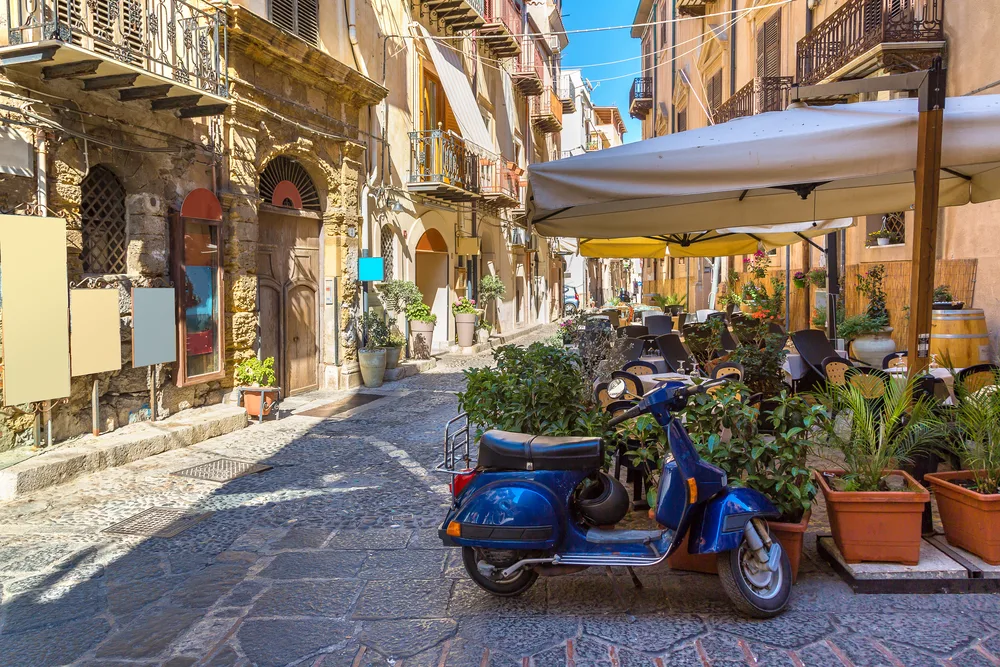
Sergii Figurnyi/Shutterstock
With the best places to visit in Sicily fresh in your mind, take a look at the answers to travelers’ most frequently asked questions to learn more and get ready for your upcoming trip!
What is the most beautiful part of Sicily?
The most beautiful part of Sicily could be considered the coastal Taormina and Isola Bella, known as the Pearl of the Ionian, if you’re after scenic natural beauty with impressive villas, sandy and pebbled coastlines, and lush, botanic gardens.
Erice, a medieval city on Mount Erice with ancient temple-turned-castle surrounded by gardens, is another contender for the most beautiful part of Sicily. This mountainside city has far-reaching views over the sea and capes below, vineyards, olive and orange groves, and villages in green valleys.
Which part of Sicily is best?
The best part of Sicily to visit is Catania, one of the most popular cities on the island with stunning views of the towering Mount Etna volcano, historic squares home to ornate cathedrals and fountains, a thriving seaside culture, and Baroque architecture that makes it feel fairytale-like in parts.
Going to Catania also puts you close enough to nearby cities, like Noto, Taormina, Isola Bella, and Siracusa, to take fun day trips and expand your trip a bit more.
Where should I go for the first time in Sicily?
First-time visitors should go to Palermo for the best balance of ruins, historic architecture and cathedrals, great food, affordable prices, and manageable traffic (if you’ll be renting a car).
You’ll be close to Cefalu to the east and Trapani, San Vito Lo Capo, and Erice to the west, making it the perfect basecamp for a first-time stay.
How to spend 5 days in Sicily?
Spending 5 days in Sicily, you could start by arriving in Catania from Rome, exploring its piazzas, Baroque cathedrals, and fish markets before heading over to Syracuse and nearby Ortigia Island for the beaches and stunning Greek and Roman ruins in the Neapolis archaeological park.
Check out Ragusa, known for its beautiful old town and verdant parks with amazing views from its hillside location by the sea, then finish up by spending a little time in Noto for its Baroque palaces, cathedrals, and arch.
How many days in Sicily is enough?
Ideally, you should spend anywhere from 10-14 days in Sicily to give yourself enough time to make your way around the island’s best places to visit. A tour around a few of the coastal, hilltop, and mountain towns will take you around 2 weeks if you plan on sightseeing and taking some day trips.
If you don’t have that much time, a 5-7 day trip to Sicily can still be spectacular. Just focus your visit on a smaller region of the island and rent a car to easily make your way between towns and cities as you go.
So, What Are the Best Places to Visit in Sicily?
The best places to visit in Sicily are diverse and far-ranging around this island — roughly the size of Massachusetts.
See stunning Greek and Roman ruins in Agrigento and Syracuse to unexpected and examples of medieval, Baroque, and Arab-Norman architecture in coastal Noto, mountainside Erice, and hilltop Ragusa.
Dine on fresh seafood served with Sicilian flair and flavor, drink the finest Trapani and Marsala wines, enjoy sugar highs with local pastries and gelato, and prepare for full days of exploring and sightseeing with a dark cup of Italian espresso while you’re here.
Whether you’re up for historic tours and ruins or just want to see the natural beauty and beaches while enjoying local flavors, Sicily is a gem in Italy’s crown and one that you shouldn’t miss.



